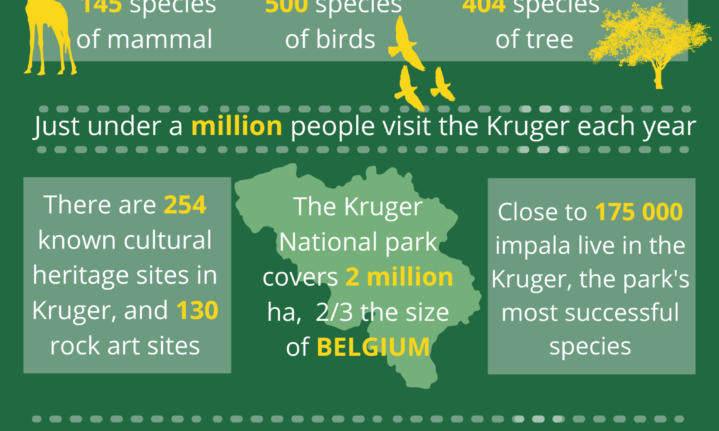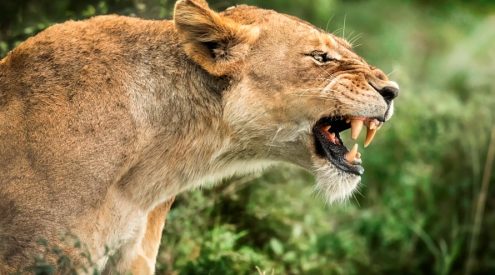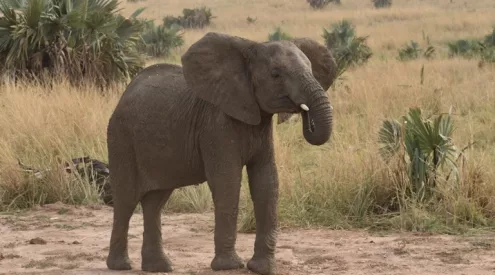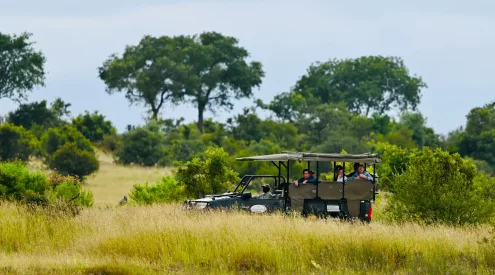One of South Africa’s most loved national parks, the Kruger is full of interesting critters, has a fascinating history and is brimming with unique and unusual facts. Here are the numbers that make up this beloved park.
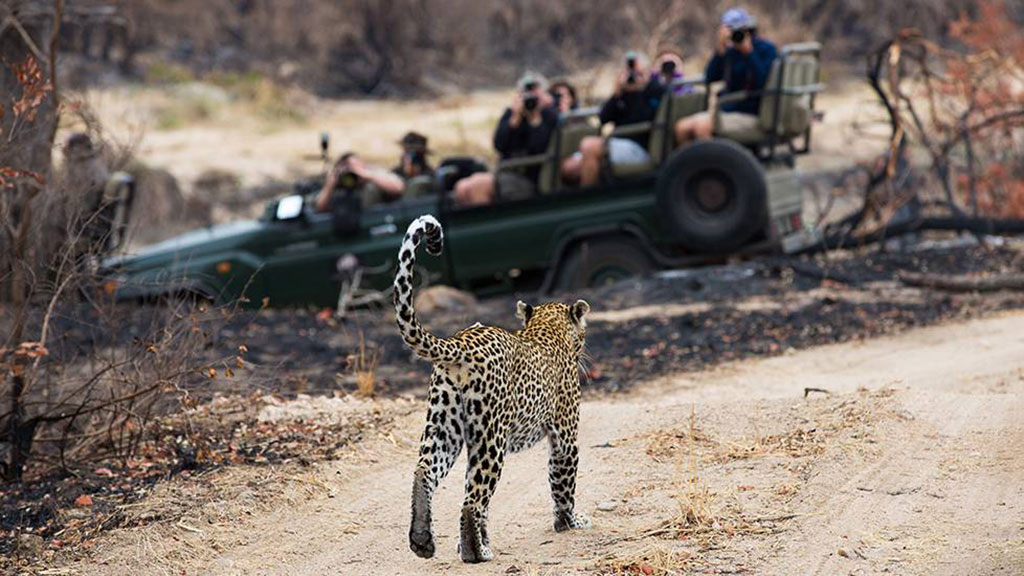
Home to over 500 species of birds, Kruger is a birder’s dream. Whether a novice birder or a borderline ornithologist, the birds of Kruger show up for everyone. The sheer size and diversity of habitats make Kruger a haven for birds, some of which may have disappeared if not for the park.
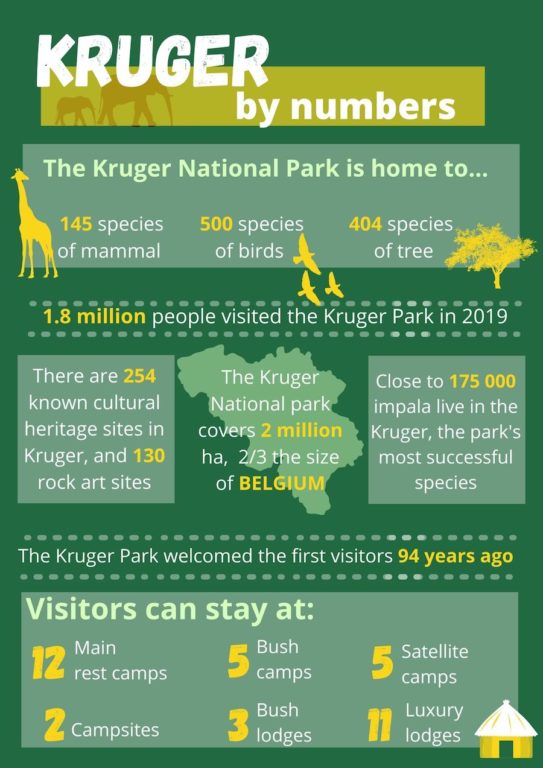
The yellow-billed oxpecker, for example, thought to have gone extinct in the late 1800s reappeared in the 1970s and Kruger and the surrounding reserves are the only area you can see the species in South Africa.
The Avian demography unit has dubbed Kruger an important birding site in South Africa, because of the “red data species” that live there. These are birds that are uncommon, rare or vulnerable to extinction but have healthy populations in Kruger because of the pristine environment. These include the Martial Eagle, Grey-headed Parrot, Bateleur, Kori Bustard, Southern Ground-Hornbill, Saddle-billed Stork and the Lappet-faced Vulture.
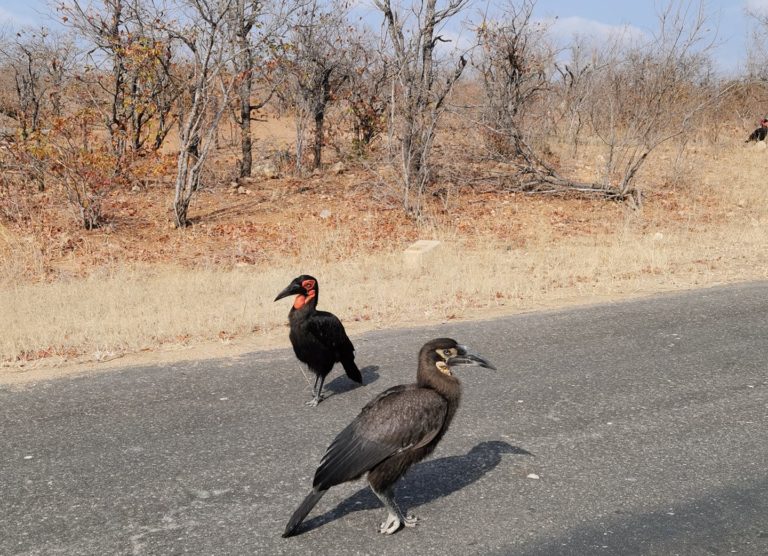
A mature and juvenile Southern Ground-Hornbill near Mopani camp. Visitors are requested to report sightings as part of an ongoing research project. Photo: Lauren Dold
Other birds found in Kruger that are rare elsewhere
- Tawny Eagle
- Lappet-faced Vulture
- White-backed Vulture
- White-headed Vulture
- Hooded Vulture
- Pel’s Fishing-Owl
- Yellow-billed Oxpecker
- Brown-headed Parrot
- Thick-billed Cuckoo
- Senegal Lapwing
- African Finfoot
- Stierling’s Wren-Warbler
- Thrush Nightingale
Mammals
In terms of mammals, the Kruger is an equally important haven for sanctuary for certain species. For rhinos black and white, for wild dogs, cheetahs and for smaller mammals like the scrub hare and the golden mole.
It is home not only to around 175 000 impala, but 20 other species of antelope as well, some of them much rarer. Some of them like the Oribi or Hartebeest are even rare to see in the park.
Antelope of the Kruger Park
- Eland
- Kudu
- Waterbuck
- Bushbuck
- Nyala
- Common Reedbuck
- Mountain Reedbuck
- Klipspringer
- Grey Rhebuck
- Suni
- Oribi
- Steenbok
- Sharpe’s Grysbok
- Common Duiker
- Red Duiker
- Tsessebe
- Lichtenstein’s Hartebeest
- Blue Wildebeest
- Roan Antelope
- Sable Antelope

Traffic jam Kruger-style caused by baboons and impala on the Sabie low-water bridge.
Visitors
The first day visitors entered the Kruger in 1927, but it was only in 1928 that overnight facilities were built. The first huts were built at Pretoriuskop, Skukuza (then called Sabie bridge) and Satara.In 1929, 12 more huts went up at Skukuza, and two more at Satara. By 1931, accommodation had gone up at Letaba, Balule, Olifants, Malelane and Lower Sabie.
Just under a million people visit Kruger each year, and South Africans account for about 80 per cent of those visitors. For many South Africans, a yearly pilgrimage to Kruger is a family tradition. We asked South Africans what their favourite part of Kruger is, here’s what they had to say.

Rabelais hut, the original gate entrance in the mid region of the park, later replaced by Orpen gate. Photo: Lauren Dold
Cultural heritage sites
While there are over a hundred cultural heritage sites throughout Kruger, three have been given special attention and are open to the public. They are the Albasini ruins near the Phabeni Gate, an old Portugese trading post (Magashula’s Kraal) from 1845.
The Masorini ruins, an iron age site 12km from the Phalaborwa gate. Here it was found that the Sotho speaking BaPhalaborwa, who lived there until the 1800s had a sophisticated industry of mining and smelting iron ore, and a thriving iron-ore trading business.
The Thulamela ruins in the far north of the park date back about 500 years, and was likely a small chiefdom established after Great Zimbabwe, north of the Limpopo River, was abandoned. Visitors can book a trail to see the Thulamela at Punda Maria rest camp.










